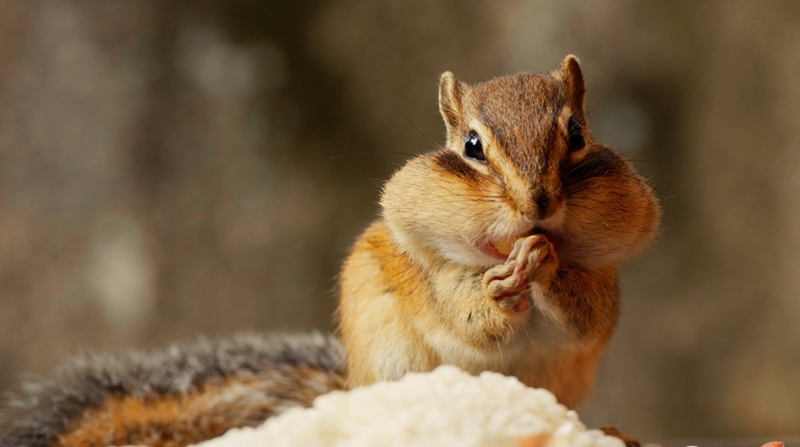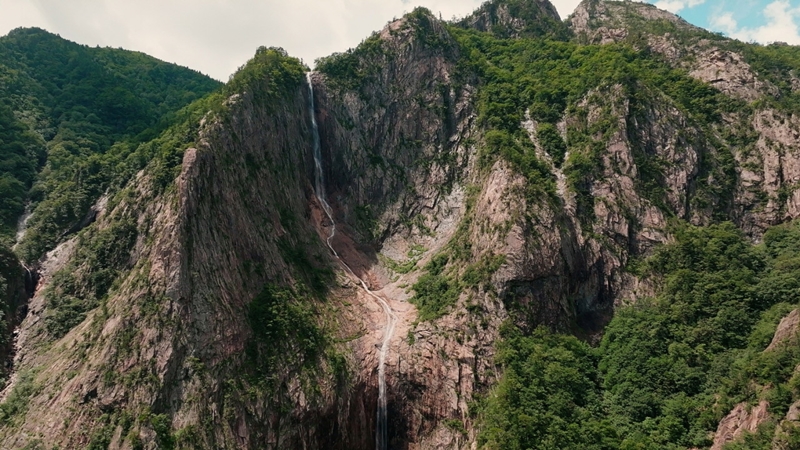By Lee Kyoung Mi
Photos and video = Movieondo
Dusk fills Yeonhwabong Peak on Sobaeksan Mountain in Chungcheongbuk-do Province. As the sun starts to rise, the fog turns into clouds and later the sea. The wave of white clouds moves in and out of the mountain and swirls as if dancing.
"There is no separate heaven if you go to the sea. The sea has given me everything," a haenyeo (female diver on Jeju Island) in her 70s says, having spent most of her life diving into the sea to collect seafood. She sets out for the blue and black sea again today.
The protagonists of the documentary film "No Boundaries" are the country's national parks. The film in a vivid and grand yet serene manner depicts the nation's mountains and seas and the people and wild animals that live in and around them.
The film shows the colorful valley of Juwangsan Mountain's Jeolgol Valley in Gyeongsangbuk-do Province, Ulsanbawi Rock on Seoraksan Mountain in Gangwon-do Province full of pure white snowflakes, and mackerel fishing boats with lights turned on top of the pitch-black sea. The work's grand scenes of nature's beauty and grandiosity dare viewers to take their eyes off the screen over its 90-minute length.

This scene from "No Boundaries" shows a squirrel through a forest of trees peeling an acorn with its paws and stuffing it into its mouth, with its cheeks appearing ready to explode.
"No Boundaries" has won awards and nominations for documentary awards from 17 film festivals in 11 countries including the Brandenburg International Film Festival of Germany and the Hong Kong International Festival.
The film's director Jaeun Chin on Nov. 23 said in a written interview with Korea.net, "The more you seek nature, the more you find it and feel its value," adding, "The world's eight billion people can apparently feel moved by nature whether Korean, Maori from New Zealand or Somali from Africa."
"No Boundaries" was made using special effects. A scene of clouds over Sobaeksan Mountain was filmed through time lapse, or shooting one frame at a time at specific intervals, using a drone.
"Computer graphics (CG) technology has vastly improved with the addition of artificial intelligence, but materializing that scene via CG would've been impossible," Jin said. "This is a miraculous gift from nature."
To fully feel nature, the director suggested "pausing for a moment and slowly taking a deep breath."
"If you take out your smartphone to take a photo because you think the scenery is beautiful, that feeling of awe stops when you take photos. Before you take out your smartphone, quietly and carefully observe the emotions you feel. If you take a photo of that feeling afterwards, you can make the value of national parks on the Korean Peninsula yours."

This image of Towangseong Falls on Seoraksan Mountain in Gangwon-do Province is from the film "No Boundaries."
The country has 23 national parks including those of Jirisan Mountain spanning the provinces of Gyeongsangnam-do, Jeollabuk-do and Jeollanam-do; Hallyeohaesang covering Gyeongsangnam-do and Jeollanam-do; Songnisan Mountain in Chungcheongbuk-do Province; Byeonsanbando in Jeollabuk-do Province; Taeanhaean (Taeanbando) in Chungcheongnam-do Province; and Palgongsan Mountain in Gyeongsangbuk-do, which was upgraded to a national park in May.
These protected areas are directly managed by the central government and designated by the Minister of Environment for the purpose of preserving the nation's representative natural ecosystems and natural and cultural landscapes.
Korean movies with solid plots are good to watch, but another way to enjoy Korean content is to clear one's head by seeing the country's natural landscapes.
Vividly highlighting the beauty of domestic national parks, "No Boundaries" is slated for release on Nov. 30.
km137426@korea.kr
